Biography Gaston Prunier was born in Le Havre from the marriage of Victor Adrien Prunier (1815-1868) and Ursule Louise Alleaume (1822-1870)1. He entered the School of Fine Arts in Le Havre where he was a student of Charles Lhullier, then he was admitted to the School of Fine Arts in Paris in the studio of Alexandre Cabanel. Gaston Prunier's workshop is located at no. 24 rue Dombasle in the 15th arrondissement of Paris2. From 1891, he exhibited at the Parisian gallery Le Barc de Boutteville. He presented his engravings at the Salon of 1893 and, the following year, he was admitted to the Salon des Cent and the Salon des Indépendants, where he exhibited until 1907. Making a long stay in the Pyrenees between 1894 and 1898 in order to decorate churches there, he married Marie Anne Claire Etchebarne in Saint-Palais (Pyrénées-Atlantiques) on February 5, 18953. Between 1898 and 1925, Gaston Prunier participated each year in the exhibitions of the National Society of Fine Arts. He also exhibits his works in Le Havre and in numerous Parisian galleries. In 1907, we found Gaston Prunier within the Group of XXX, a meeting of thirty independent avant-garde artists initiated by Pierre Dumont and also counting in its ranks the names of Raoul Dufy, Henri Matisse, André Derain, Albert Marquet, Maurice Louvrier, Charles Duhamel, Robert Antoine Pinchon, Charles Frechon, Pierre Girieud, Gaston Gosselin, Tristan Klingsor, Eugène Tirvert, Georges Bradberry, Charles Angrand, Marcel Couchaux, André Allard, Ernest Morel and Maurice de Vlaminck. After a joint exhibition at the Legrip gallery in Rouen (1907), the group quickly (1908) took the name which has remained historic as the Norman Society of Modern Painting. In 1917, Gaston Prunier was part, with Maurice Asselin, Louis Charlot, Henri Lebasque, Jules-Émile Zingg, of the Artists' Missions to the Armies established by General Niox, director of the army museums, for the purposes of pictorial representations of documentation of war
Atwork Gaston Prunier paints the world of work, factories and port activities. We owe him numerous views of Paris, Le Havre, London and the Pyrenees (in particular, for the latter region, of the surroundings of Saint-Palais, the city where his wife was born). Instead of his landscapes blending into the abundant production of the Belle Époque, observes Nicolas Éprendre, Gaston Prunier, “in the manner of a documentarian, bears witness to the transformations which shook the Capital at the beginning of the 20th century”5 . Friend of Jean Jaurès6, he painted the pacifist demonstration of Pré-Saint-Gervais7 (Sunday May 25, 19138) which “gives a colorful representation of the meeting, with its numerous red flags, the Sunday clothes, the newspaper sellers, the green of 'a countryside yet so close to Paris, and, in the distance, Paris and its factory fumes. The suburbs, often rejected, an uncertain space, are then at the center of history and its representations”6. For Guillaume Lasserre, “he crystallizes the question of anti-landscape in scenes of construction sites and factories, taken on the subject which he then reworks in the studio. His work refers to the Jauresian socialist movement. It is part of an almost monochrome universe that we find in many artists referring to this dark universe”
Works in public collections France Castres, National Center and Jean-Jaurès Museum7. Chambéry, museum of fine arts; Landscape, oil on canvas 23x32cm after Théodore Rousseau10. Digne-les-Bains, Gassendi museum, La Vallée du Loup, near Grasse, pencil and watercolor. Dijon, museum of fine arts. Gray (Haute-Saône), Baron-Martin museum: Landscape with mountainous distances (The Pyrenees), watercolor, 27 x 32 cm; Sunset on the coasts of Brittany, watercolor, 50 x 65 cm; The Villette basin, watercolor, 50 x 65 cm. Jassans-Riottier, town hall, Les glaisières de Vanves11. Le Havre: Municipal library: print. André-Malraux Museum of Modern Art3: Coal sorting in the sheds, watercolor drawing, 32x50cm, 1899; Tank tops, watercolor drawing 60x50cm, 1899; The end of the day, watercolor drawing 32x50cm, 1899; Unloading a coal carrier, watercolor drawing 32x50cm, circa 1899; Coal on the quay, watercolor drawing 32x50cm, circa 1899; The cotton docks, watercolor drawing, 32x50cm, 1899; Factories near Le Habre, watercolor drawing 32x50cm, circa 1899; Basin in Le Havre, watercolor drawing 32x50cm, circa 1899; The liner "La Champagne" in refit hold, watercolor drawing 50x65cm, circa 1899; Hand winches on a barge, watercolor drawing 32x50cm, circa 1899. Limoges national museum of Adrien-Dubouché porcelain. Péronne, Alfred-Danicourt museum. Paris : Manufacture des Gobelins: tapestry boxes)12; Ministry of Justice ; National furniture, Béarn (fair scene in a mountainous valley with a view of Saint-Jean-Pied-de-Port, tapestry cardboard 500x380cm13. Army museum. Living History Museum (Montreuil) • Factories in Saint Denis (49.5x 39.5 cm) • Construction site (25x32 cm) • Paris, the Javel steelworks (25x32 cm) • Industrial panorama, Paris or nearby suburbs . (25 cm
Carnavalet Museum: L'Ecluse de la Monnaie - Dam-lock in front of the Hôtel de la Monnaie The Monnaie lock, drawing14; The Seine at the Pont de Grenelle, drawing, circa 1904; Tanneries de la Glacière, watercolor drawing15; Docks at La Villette, watercolor drawing16; Crowd on Place de la Concorde, November 11, 1918, watercolor drawing17; Construction site under construction rue du Four, watercolor drawing18; Butte-aux-Cailles artesian well, watercolor drawing19; Glacier in Vanves, watercolor drawing20; Construction sites on rue de Sèvres, near boulevard Raspail, watercolor drawing21. Department of Graphic Arts of the Louvre Museum10: Demolition of the ruins of the Court of Auditors with workers, four watercolor pencils and gouache 32x43cm, circa 1897. Cannon Street Bridge in London, watercolor drawing 50x65cm, 1908. Factory in London, watercolor drawing 24x33cm, 1911. Orsay Museum ; Elysee Palace. Saint-Palais, church: fresco22. Toulouse: Augustinian Museum23; Prefecture of Midi-Pyrénées. Flag of Romania Romania Bucharest, National Art Museum of Romania24.











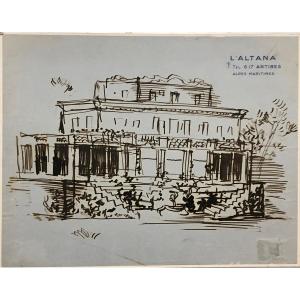


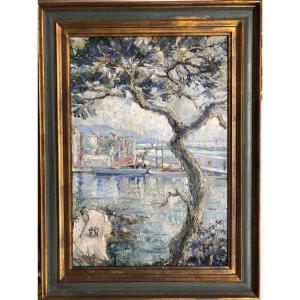
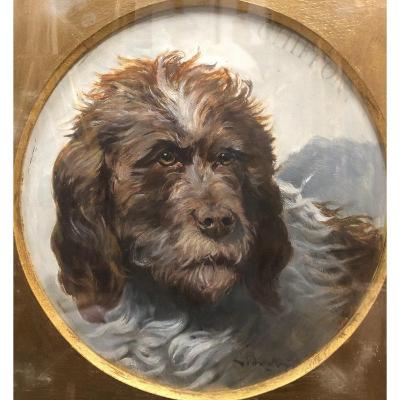
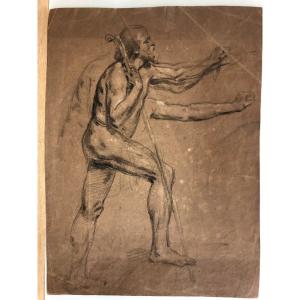
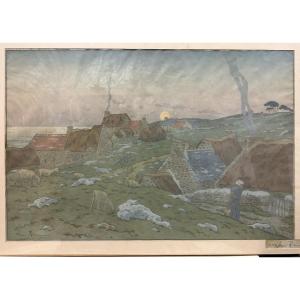

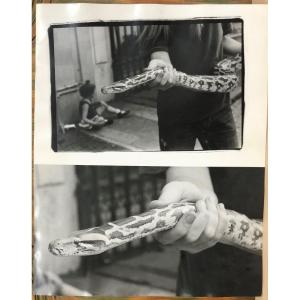

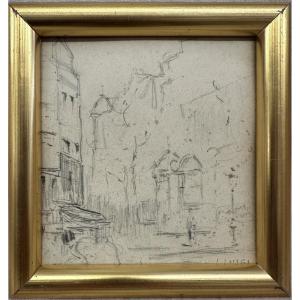


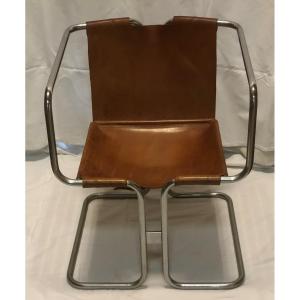



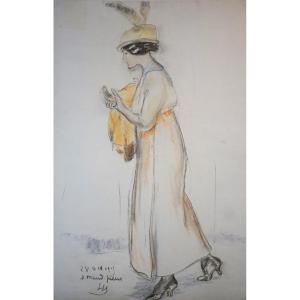





 Le Magazine de PROANTIC
Le Magazine de PROANTIC TRÉSORS Magazine
TRÉSORS Magazine Rivista Artiquariato
Rivista Artiquariato